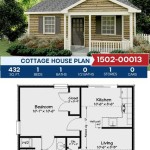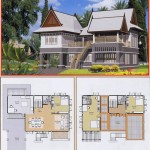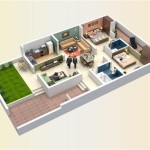Japanese architecture is renowned for its unique blend of traditional and modern elements, creating a harmonious balance between aesthetics and functionality. Japanese house plans offer a distinctive approach to living spaces, characterized by their emphasis on simplicity, natural materials, and a strong connection to nature.
Design Principles:
1.Simplicity and Minimalism:
Japanese architecture embraces the concept of "wabi-sabi," which celebrates the beauty of imperfection and impermanence. House plans are designed with clean lines, simple forms, and a minimalist aesthetic, allowing the natural beauty of materials and the surrounding environment to take center stage. 2.Open Layouts and Sliding Doors:
Japanese homes often feature open, flowing layouts that promote a sense of spaciousness and interconnectedness. Sliding doors, known as "fusuma" and "shoji," separate different areas while maintaining a visual connection, allowing for flexibility and adaptability in the living space. 3.Natural Materials:
Japanese architecture heavily incorporates natural materials such as wood, bamboo, stone, and paper. These materials bring a sense of warmth and texture to the home while harmonizing with the surrounding natural environment. Wood, in particular, is a prevalent choice for its versatility, durability, and aesthetic appeal. 4.Connection to Nature:
Japanese house plans prioritize a connection with nature. Large windows and sliding glass doors blur the boundaries between indoor and outdoor spaces, allowing for natural light to flood in and creating a seamless transition between the living area and the garden or surrounding landscape. 5.Functional Design:
Japanese homes are designed with functionality and efficiency in mind. Spaces are carefully planned to maximize storage and minimize clutter, resulting in organized and well-maintained living environments. Built-in furniture and multifunctional spaces, such as tatami rooms that can serve as both a living area and a sleeping area, are common features.Common Features:
1.Genkan:
The genkan is the entrance area of a Japanese home, typically featuring a sunken floor and raised platform. It serves as a transitional space where shoes are removed before entering the main living area, maintaining cleanliness and preventing dirt from entering the home. 2.Tatami Rooms:
Tatami rooms are traditional Japanese rooms featuring woven tatami mats on the floor. These mats are made from natural rush grass and provide a comfortable, slightly elevated seating surface. Tatami rooms are often used for sleeping, meditation, and formal gatherings. 3.Shoji Screens:
Shoji screens are sliding paper screens that serve as both room dividers and windows. Made from translucent paper stretched over a wooden frame, they allow light to filter through while providing privacy. Shoji screens can be easily moved or removed to adjust the layout and lighting of a space. 4.Tokonoma Alcove:
The tokonoma is a special alcove or display area found in many Japanese homes. It is typically located in the main living room and is used to display artwork, seasonal decorations, or other prized possessions. The tokonoma serves as a focal point and adds a touch of elegance to the space.Conclusion:
Japanese architecture design house plans offer a unique and harmonious living experience that blends traditional aesthetics with modern functionality. The emphasis on simplicity, natural materials, and a connection to nature creates a serene and peaceful living environment. If you appreciate Japanese culture and design principles, exploring Japanese house plans may provide inspiration for creating a beautiful and functional home that reflects your values and lifestyle.
Traditional Japanese Home Floor Plan Cool House Plans Ideas Des Architecture Style

Traditional Japanese House Floor Plan Google Search Plans

Oh House By Takeru Shoji Architects Japan Design Layout Plans Japanese

Typical Home Layouts Differences Between Japan And Abroad

Japanese House For The Suburbs Traditional Style

Cool Traditional Japanese House Floor Plans Unique Home Design

Gallery Of Koya No Sumika Ma Style Architects 16 Minimalist House Design Japanese Home Floor Plan

Japanese Home Design Ideas Pictures 331 Sqm Homestyler

House Floor Plan Design Plans Traditional Japanese Container Home Style

Japanese House Floor Plan Courtyard Google Search Traditional Style Plans








